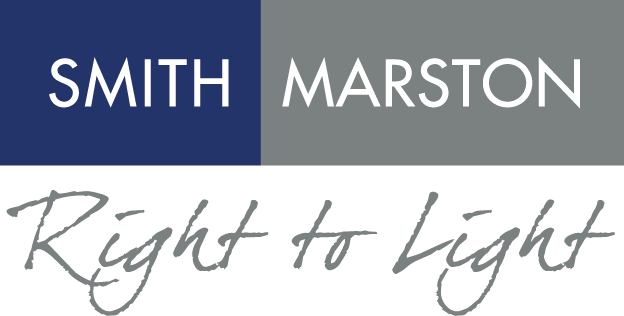Daylight & Sunlight Matters for Developers
Daylight & Sunlight Assessments for Planning Applications
Many Local Authorities often request that a developer submits a Daylight and Sunlight Assessment to accompany a Planning Application, many now even before they will even validate the application.
This will normally follow standard industry used criteria as laid down in the document known as “Site Layout Planning for Daylight and Sunlight – A Guide to Good Practice, 3rd Edition’, by Paul Littlefair. This was formerly titled “BRE Digest 209”, and is commonly still referred to as this.

There are two types of assessment a property developer may be asked for:
1A ‘Within’ Assessment
This is an assessment to see whether your new development (usually residential in nature, for example, new housing, flats or student accommodation) will be able to enjoy good daylight and sunlight following completion. Thus, it seeks to assess your own scheme, and has consideration of things such as room layouts, window glazing, and internal reflectance values of wall, floor and ceiling finishes.
If you can demonstrate through a Daylight and Sunlight Assessment that your new development will enjoy good natural light conditions, then this is more likely to contribute positively to the approval of the scheme.
If however the new design cannot demonstrate a good level of daylight and sunlight to the Local Authority, they can ask you to adapt your scheme so as to improve such conditions. This can lead to a delay in getting your scheme validated, as any amended design will normally have to be re-assessed to demonstrate an improvement to the planning officer.
Failure to address such matters can result in a scheme being refused planning permission.
2A ‘Neighbouring’ Assessment
If your new development is situated close to other nearby properties, the Local Authority might be concerned that your scheme may have an adverse impact upon the daylight and sunlight currently enjoyed by such properties. This is especially so if the neighbouring buildings are residential in nature.
You may be asked to assess this risk, sometimes even before your application will be validated.
This type of report seeks to assess the amount of daylight the neighbours’ windows are capable of achieving, and, if a neighbours’ room layout is known, it may also seek to demonstrate how the daylight is distributed within the neighbours’ room. The tests also seek to assess how much sunlight the neighbours’ windows will get over the course of the year, and, how much sunlight they will get in winter months.
The other aspect sometimes considered here is the impact that the new development may have upon overshadowing to the neighbour’s principal outdoor amenity and garden areas.
Often one of these reports can assist with a planning application if it can demonstrate low impact upon neighbouring properties. Indeed, sometimes, because of demolition of existing site structures, improvements to conditions serving neighbouring properties can be demonstrated.
Enquire about a Daylight & Sunlight Assessment
“Dear Adrian, Thought you might like to see the appeal decision received this afternoon. After all this time it is great news. Your report has undoubtedly helped in the final decision, so thank you very much from Jane and me for all your excellent work.”
“Smith Marston helped us gain planning approval on our two storey extension after a number of objections from neighbours. The advice they gave and the detailed letter to the council gave factual information to dismiss unfounded objections.”
Technical Information on Daylight & Sunlight Matters
Demonstration that a scheme satisfies the guidance contained with the BRE guide for daylight and sunlight can be very useful to the progress of a development scheme through the planning system.
We have been involved with numerous schemes where concerns have been raised by the planning officer and/or neighbours regarding daylight and sunlight to neighbouring existing buildings potentially affected by the proposed development. Often though we are able to demonstrate that the scheme satisfies the guidance described within the BRE document and thus remove this obstacle to the progression towards planning permission.
On some occasions, the BRE Daylight and Sunlight assessments are commissioned proactively by the developer to support a scheme whilst on other occasions this may be something requested by the planning department. It is worth noting that a planning application submitted without a Daylight and Sunlight assessment, but where one would be appropriate, may be delayed through the planning process if such a study is then requested by the planning department after submission of the planning application.
In addition to BRE assessments in relation to the effect of the development upon the neighbouring buildings and external amenity areas, ‘Within Development’ assessments can also be requested by Local Authorities to demonstrate that the development building itself will receive adequate natural daylight and sunlight.

Daylight & Sunlight Matters for Architects and Planning Consultants
Most of our work is carried out in conjunction with architects, or planning consultants, or on larger schemes, both! From sole practitioners to large national and international based practices, we aim to work alongside you and your client.
As an architect or planning consultant, you will no doubt be some of the first members of the team, and will be involved with the client from the off.
Your design will need to comply with a whole host of criteria to satisfy planning policies and, of course, our input will be just one aspect of a bigger picture.
By involving us early we can assess your scheme to advise on the impact it will have upon neighbouring property owners in terms of Daylight and Sunlight, and overshadowing to the neighbours’ garden areas.
You may also be asked to have your own design checked for compliance, and again, we can assess your own scheme to report upon the daylight and sunlight levels that the newly designed building will achieve.
Our reports are prepared based upon the requirements of the most widely recognised and used document in the UK for assessing good Daylight and Sunlight design. This is a document known as “Site Layout Planning for Daylight and Sunlight – A Guide to Good Practice, 2nd Edition” by Paul Littlefair. This is a nationally recognised publication, and whilst not mandatory, it has been adopted by many design practitioners, planning consultants and Local Authority Planning Departments throughout the UK.
Whilst we carry out many of these reports for developers, and occasionally Local Authorities themselves, on occasion we find that a developer has been asked for such a report when one is not really required. We have on several occasions helped to persuade Local Authorities to drop the need for a full assessment with a simple letter, thus saving your client the cost of a full report, and the associated time delay.
At Smith Marston, we want to provide a good, reliable service, and help you get your scheme over the line. We report accurately, and we will not simply tell you what you want to hear, but, what you need to hear. Reporting must always be credible and stand up to scrutiny so as not to undermine our service and put your application at risk of being refused.
Whilst we prepare Daylight and Sunlight Assessments, we can also add value to developer clients by being able to ‘bolt on’ a legal Right of Light Assessment as well. Not all Daylight and Sunlight consultants can do this, and this sets us apart from them.

